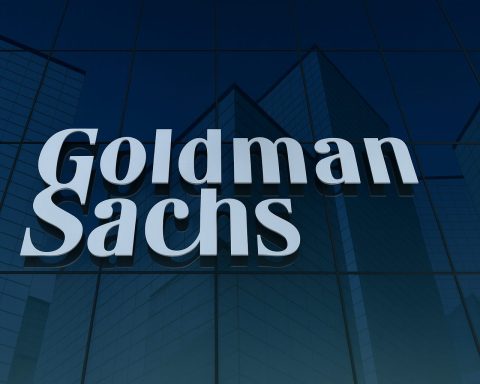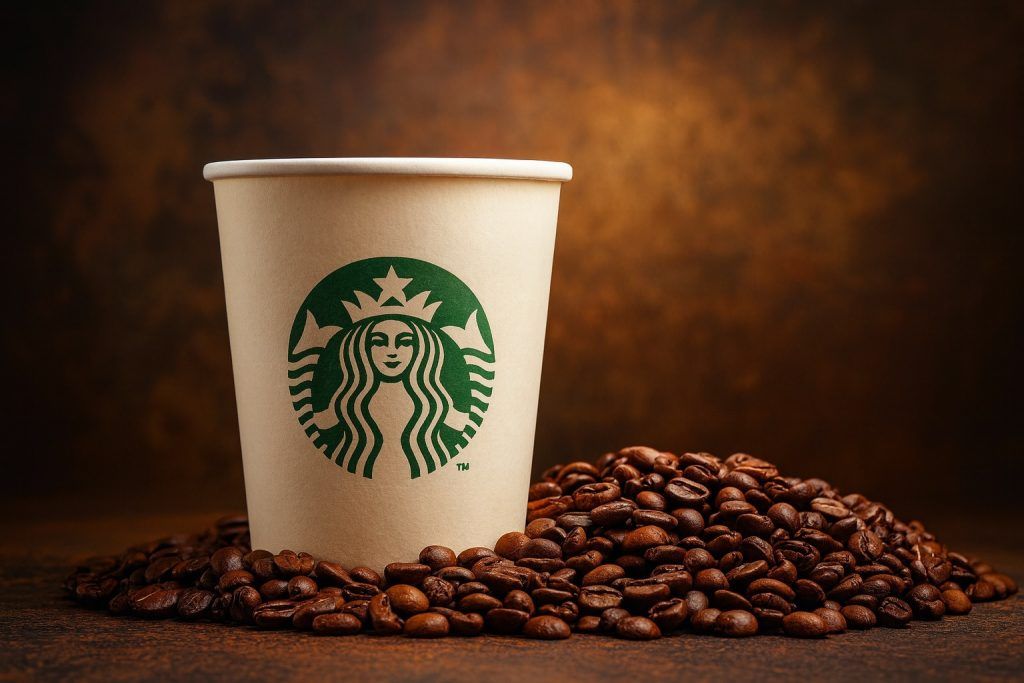- Stock price & moves: UPS (NYSE: UPS) closed at $97.40 on Oct. 29, 2025, up about 1.1% for the day [1] [2]. The prior session (Oct. 28) saw UPS shares jump double-digits after a blockbuster Q3 report [3] [4]. Earlier in 2025, the stock had tumbled roughly 30% year-to-date amid weak volume and rising costs [5] [6].
- Q3 financials: UPS reported adjusted EPS $1.74 (vs. $1.30 expected) on $21.42B revenue (vs. $20.8B est.) [7] [8]. Revenue fell about 3.7% year-on-year due to lower volume, but cost cuts and pricing gains lifted margins. UPS also guided Q4 revenue ~ $24.0B (above Wall Street’s ~$23.8B consensus) [9] [10]. CEO Carol Tomé said retailers expect a “good peak” in holiday volumes, even if daily averages slip due to UPS cutting low-margin Amazon business [11] [12].
- Cost cutting & restructuring: The company is in the midst of its largest-ever overhaul, aiming to cut $3.5 billion in costs in 2025 [13]. UPS has closed 93 facilities and shed about 48,000 jobs this year [14] [15]. Management has been exiting low-margin business: for example, UPS will halve its Amazon volume by 2026 to focus on higher-yield customers [16] [17]. These moves have already saved roughly $2.2B year-to-date, with $3.5B expected by year-end [18].
- Analyst views & outlook: Most analysts see the earnings beat as a turning point. Citi and UBS recently trimmed their UPS price targets (to ~$112 and $110 respectively) while keeping “Buy” ratings [19]. Evercore’s Jonathan Chappell noted that Q3 “expectations were very low”, so the surprise beat and renewed guidance triggered a short squeeze [20]. The consensus analyst price target is about $110 (roughly 13% upside) [21], with opinions ranging from Hold to Moderate Buy. Investors are watching whether UPS can sustain profit growth under its “Better, Not Bigger” strategy, as Tomé puts it [22].
- Industry context: UPS’s rebound comes amid mixed industry signals. FedEx also beat estimates (Q1 2026 earnings) and saw its shares jump ~5–6% [23]. Sector forecasts remain modest: DHL projects ~2.5% annual global trade growth through 2029 [24], and ShipMatrix expects U.S. holiday package volume up ~5% (FedEx/Amazon up 5–8%, UPS flat) [25] [26]. Tariff-driven volatility persists – U.S. tariffs and the end of duty-free “de minimis” shipments have cut into volume on lucrative China lanes [27] [28].
UPS Stock Performance and Trends
After a rough year, UPS stock has found fresh life. On Oct. 28, the day UPS released Q3 results, the shares initially surged into the low $100s – about an 18% jump from the prior close [29]. By the end of that day, UPS was up roughly 8–9% [30]. The rally partly recouped earlier losses: in early October the stock had traded as low as the low-$90s, down about 28% from its January levels [31] [32]. On Oct. 29, the momentum continued gently; UPS closed at $97.40, about 1.1% higher [33] [34]. (For context, the S&P 500 traded relatively flat that day.) Trading volume has been above average since the earnings release, reflecting heavy interest and short-covering. UPS now yields roughly 6.8% (dividend ~$6.74 annually), one of the highest in the index – a point of focus for yield-oriented investors.
“The cash flow pressures we saw in the second quarter eased during the third quarter,” CEO Carol Tomé said in explaining the recovery [35]. Investors agree: the Q3 beat allayed fears that UPS might cut its dividend if profits stayed weak. The stock’s recent trading band is now roughly $95–$100, well below its 52-week high (~$139) but up from August lows. Analysts note that after Monday’s surge, UPS is outpacing FedEx year-to-date, narrowing the gap that opened earlier this year.
Strong Q3 Earnings and Guidance
UPS’s third-quarter earnings, announced Oct. 28, were the strongest sign yet that its turnaround plan is working. UPS delivered $1.74 of adjusted EPS (cleaned for one-time items) vs. $1.30 expected [36] [37]. Consolidated revenue was $21.42 billion, down ~3.7% from a year ago, but still above the $20.84B Wall Street forecast [38] [39]. Revenue per package was up nearly 10% in Q3 as UPS raised prices, offsetting volume declines of over 12%. As a result, operating margin expanded to about 10.0% (from 8.8% in Q2) [40].
Management reinstated forward guidance, setting Q4 revenue around $24.0B [41]. That’s slightly above analysts’ $23.8B consensus and implies year-on-year flat to mild growth (despite tougher comparisons). On the conference call, UPS said retailers’ preliminary plans point to a “good peak with a ‘considerable surge’” in holiday shipping [42]. Still, UPS expects average daily volumes to stay down in Q4 due to its deliberate pullback from low-margin package deliveries (especially with Amazon) [43]. CEO Tomé said the holiday guidance reflects caution – about 23.4 billion packages are expected to move over the peak season, but the pace is leveling off after pandemic highs.
The beat took Wall Street by surprise. Evercore ISI analyst Jonathan Chappell observed that “expectations were very low” going into the report, meaning even modest outperformance would uplift the stock [44]. Indeed, UPS’s results not only topped forecasts on the income and revenue lines, they also renewed confidence that its cost-cutting program is delivering. The company said it has now saved ~$2.2B through “Efficiency Reimagined” reforms in the first nine months, on track for $3.5B in 2025. CFO Brian Dykes noted that rising pension and benefit costs will continue to pressure margins in 2026, but he was upbeat that automation and network changes will help stabilize profits.
Analyst Insights and Investor Outlook
Analysts quickly updated their models. Many banks hiked near-term profit forecasts given UPS’s stronger execution. For instance, UBS and Citi each lowered their 12-month price targets to about $110–$112 (from the high $110s) but maintained “Buy” or “Neutral” ratings, noting the stock still trades below historical multiples [45]. Evercore ISI, which had been cautious on UPS, cut its target to $92 (an “In Line” rating) even as the beat forced a short-covering rally [46]. Overall, the consensus price target is ~$110, implying ~13% upside from current levels [47]. Roughly 4 of 30 analysts rate UPS a “Sell,” 15 “Hold,” and 10 “Buy” [48] – a middling outlook reflecting mixed views on whether growth can resume.
Market strategists emphasize that UPS’s new dividend yield (~6.8%) is unusually high for a growth company. Some caution that sustaining the payout depends on ongoing profit momentum. A Motley Fool analyst (via TS2.Tech) warned that “UPS is resetting its business, but there’s a risk that it could also reset its dividend.” Billionaire Jim Cramer has quipped UPS “could use some money”, underscoring the debate around the rich payout. While UPS has raised its dividend annually for 13 years, any stress could force a cut. (FedEx, by contrast, pays no dividend but has higher operating leverage.) For now, though, UPS reiterated its commitment to the dividend, and its strong cash flow partly supports it.
Investors are also weighing UPS’s Cost of Goods Sold (COGS) and labor pressures. The landmark Teamsters contract in August (5-year, $7.50/hr total raises) will add hundreds of millions to UPS’s annual operating costs. Barron’s magazine observed that “earnings are down [due to] higher labor costs” under this new deal [49]. UPS will need to offset those with efficiency gains. So far, management points to 35 automated sorting centers and continuing rationalization. As Tomé says, the strategy is “Better, Not Bigger” – the goal is higher profit per package, not simply volume growth.
Sector and Economic Context
UPS does not operate in a vacuum. The entire parcel delivery industry is navigating similar headwinds. FedEx serves as a bellwether: in mid-September FedEx reported its Q1 (fiscal 2026) results, beating on earnings and revenue thanks to cost cuts and strong domestic demand [50]. Shares of FedEx spiked ~5.5% on that news. Notably, both UPS and FedEx cited the U.S. end of “de minimis” duty-free exemptions on small imports. FedEx said the tariff changes trimmed about $150M from its quarter [51], while UPS said they cut ~$60M in Q3 profit [52]. Many analysts expect these trade-policy headwinds will trim $75–100M from UPS in Q4 [53].
Looking forward, major logistics players see moderate growth rather than declines. DHL’s latest “Connectedness Tracker” (Oct. 2025) projects 2.5% annual global trade growth through 2029 despite tariff turbulence [54]. In North America, slower growth (around 1.5% after tariffs) is expected, but elsewhere trade is strengthening. For the U.S. holiday season, analytics firm ShipMatrix predicts a ~5% jump in package volume over last year [55]. That gain is largely driven by an extra shopping day and stronger FedEx/Amazon volumes, while UPS and USPS volumes are forecast to remain relatively flat [56]. In short, the industry is stable but not booming: companies must fight for market share and margin.
Transportation costs are also a factor. Truck and fuel rates have moderated after mid-year spikes, which should help UPS’s operating expenses. Consumer spending on e-commerce is projected to grow at single digits this season, so UPS is looking to maintain pricing and capture lucrative B2B shipments. Indeed, UPS noted that business customers (SMBs, B2B) now make up a larger share of its mix, which is positive for profit. Still, any macro slowdown (e.g. from Federal Reserve policy) could spill over into shipping volumes. At present (late Oct 2025) U.S. interest rates are steady around 5%, and inflation has cooled to 3–4%, which should at least prevent new shocks to consumer demand.
Strategic Moves and Partnerships
UPS’s turnaround isn’t just financial – it’s operational. The company has announced several strategic initiatives in recent months. In January 2025, UPS said it would cut ~20,000 jobs; by Q3 this had more than doubled to 48,000 total cuts (34K operational plus 14K white-collar) [57] [58]. Many of those cuts are tied to its withdrawal from low-margin Amazon deliveries: UPS plans to “shrink its delivery volumes for Amazon by more than 50% by late 2026,” focusing only on profitable packages [59]. This shift is a major change – just months earlier Amazon signed a deal adding FedEx to its delivery roster [60], as FedEx will now handle some large-package shipments alongside UPS and USPS. FedEx shares jumped ~7% on news of that Amazon deal [61], underscoring how Amazon’s network choices can sway UPS’s business.
Beyond cutting costs, UPS is expanding in areas of growth. Notably, CEO Tomé indicated UPS has a preliminary agreement with the U.S. Postal Service to let USPS deliver the final leg of UPS Ground Saver parcels [62]. Under this plan, UPS would move packages to local post offices (middle-mile) and USPS would finish home delivery, boosting margin on cheap residential shipments. This would effectively create a hybrid service to better compete with cheap alternatives.
Additionally, UPS is bolstering its healthcare logistics segment. In October, UPS agreed to acquire Andlauer Healthcare Group, a Canadian medical logistics firm (deal expected to close Nov 2025) [63]. The move underscores UPS’s strategy to capture more high-value, specialized shipping (pharmaceuticals, vaccines, etc.). During Q3, UPS’s healthcare revenues grew faster than the rest of the network, reflecting this focus.
Elsewhere, UPS has quietly expanded its international network. (For example, in October UPS announced an expanded intra-Asia air freight route network – a response to shifting trade flows.) The company is also investing in technology: it recently rolled out new AI-enabled customs clearance systems to handle the surge in small-package imports (formerly duty-free) from Asia. These systems now automatically clear 90% of daily customs entries, dramatically improving speed. UPS noted that removing the de minimis exemption led to a 10-fold increase in daily customs filings [64], so automation there is critical.
Outlook – Can the Rally Continue?
With Q3 behind it, UPS faces a mixed outlook. On the positive side, cost reductions and pricing discipline have re-energized the profit engine. Tomé insists the “Better, Not Bigger” strategy will eventually restore volume growth once the network is optimized. The return of guidance and beats on Wall Street’s book suggest confidence. Many investors believe UPS has priced in near-term risks, given the huge sell-off earlier in 2025, so any further surprises (for example, a solid holiday season) could drive more upside.
Cautionary factors remain. Most analysts warn that flat volumes mean UPS must squeeze every penny of efficiency to hit targets. The $3.5B cost-cut goal is on track, but its full impact comes gradually. Labor and pension costs will rise next year, even as volume still lags. And any large-scale economic slowdown (consumer spending or international trade) would hurt revenue. The high dividend yield also poses a question: if earnings slip again, some dividend trimming might occur, which could spook income-focused holders.
On balance, markets seem tentatively optimistic. Institutional investors who had bet against UPS now see value in the shares – the late-October surge suggests some short sellers covering positions. Major fund managers like T. Rowe Price and Vanguard have held or added shares during the pullback, banking on a turnaround. Recent analyst “Up” ticks (e.g. from BofA, TD Cowen, etc.) have improved the tone. The consensus (median) 12-month price target is around $110 [65], implying room to run if UPS executes as promised.
Bottom line: As of Oct. 29, 2025, UPS appears to be at a turning point. Its stock is trading well above the summer lows after a clear earnings beat and a more confident outlook, yet it remains far below its 52-week high. UPS’s performance now hinges on execution of its strategy: further margin improvements, network efficiencies, and a return of volume growth. Investors will watch the upcoming holiday season, FedEx’s next reports, and any new guidance updates. If UPS can deliver on its promises (managing tariffs, labor costs, and Amazon pullback), analysts say there may be further upside; but any major missteps could quickly reverse this rally. The next quarter will be telling for whether UPS’s turnaround is sustainable or merely a temporary relief.
Sources: UPS’s Q3 2025 earnings report [66] and CEO comments [67] [68] (via Reuters), industry analyses [69] [70], analyst commentary [71] [72] [73], and sector context from FedEx results [74] and DHL/ShipMatrix forecasts [75] [76]. All figures and quotes are sourced from these reports and filings.
References
1. www.google.com, 2. www.google.com, 3. ts2.tech, 4. www.reuters.com, 5. www.reuters.com, 6. www.investopedia.com, 7. ts2.tech, 8. www.reuters.com, 9. ts2.tech, 10. www.reuters.com, 11. www.reuters.com, 12. www.reuters.com, 13. www.reuters.com, 14. www.reuters.com, 15. www.tikr.com, 16. www.reuters.com, 17. www.reuters.com, 18. www.tikr.com, 19. stockstotrade.com, 20. www.reuters.com, 21. www.marketbeat.com, 22. ts2.tech, 23. www.reuters.com, 24. group.dhl.com, 25. www.supplychaindive.com, 26. www.supplychaindive.com, 27. www.reuters.com, 28. www.reuters.com, 29. ts2.tech, 30. stockstotrade.com, 31. www.reuters.com, 32. www.investopedia.com, 33. www.google.com, 34. www.google.com, 35. www.reuters.com, 36. ts2.tech, 37. www.reuters.com, 38. ts2.tech, 39. www.reuters.com, 40. www.reuters.com, 41. www.reuters.com, 42. www.reuters.com, 43. www.reuters.com, 44. www.reuters.com, 45. stockstotrade.com, 46. stockstotrade.com, 47. www.marketbeat.com, 48. www.marketbeat.com, 49. ts2.tech, 50. www.reuters.com, 51. www.reuters.com, 52. www.tikr.com, 53. www.tikr.com, 54. group.dhl.com, 55. www.supplychaindive.com, 56. www.supplychaindive.com, 57. www.reuters.com, 58. www.tikr.com, 59. www.reuters.com, 60. www.reuters.com, 61. www.reuters.com, 62. www.tikr.com, 63. www.tikr.com, 64. www.tikr.com, 65. www.marketbeat.com, 66. www.reuters.com, 67. www.reuters.com, 68. www.reuters.com, 69. www.investopedia.com, 70. www.tikr.com, 71. www.reuters.com, 72. stockstotrade.com, 73. www.supplychaindive.com, 74. www.reuters.com, 75. group.dhl.com, 76. www.supplychaindive.com










